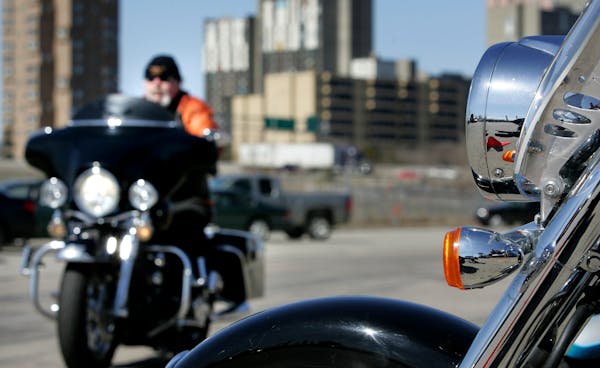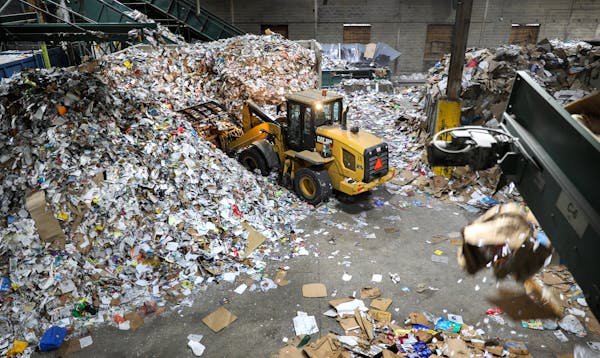Minneapolis plows its alleyways. Why doesn't St. Paul?
Listen and subscribe to our podcast: Via Apple Podcasts | Spotify | Stitcher
St. Paul has been a city for roughly 165 winters, and has never plowed its alleys.
Instead, neighbors chip in, block by block, to hire someone to plow their stretch of alley each winter. On some blocks, not everyone pays their share. On others, no one organizes plowing at all, leaving a frozen obstacle course for cars exiting their garages and recycling and garbage trucks running their routes.
So why doesn't the city step in and take care of it, the way Minneapolis does?
It's a constant query in the capital city, and one that an anonymous reader brought to Curious Minnesota, our community-driven reporting project fueled by questions from readers.
The answer begins way back in St. Paul's history, when streets and alleys in the new city were built without much thought to how each piece would fit into a larger network.
"Especially in the early days, there wasn't any planning," said Don Empson, who wrote a street guide to St. Paul. "One developer would do 40 acres and then the next developer would do another 40 acres, and they wouldn't put the streets in the same."
The result is a hodgepodge of alleys that were never engineered for standard grades or drainage — unlike in Minneapolis, where most of the original alleys were paved in the 1920s and '30s, according to Mike Kennedy of the Minneapolis Public Works Department.
Today, St. Paul's alleys vary in design and material from block to block. Some are still made of gravel, brick — even, in one case, wood.
"We have this huge network of old, failing alleys that pothole and don't drain correctly — all that kind of stuff," said Chris Anderson, a street maintenance field supervisor with St. Paul Public Works.
According to a 2019 University of Minnesota report examining the feasibility of alley plowing in St. Paul, plowing the city's 1,800 lane miles of streets, bridges and some public sidewalks costs $3 million to $4 million a year. Alley plowing would add nearly $4.8 million a year, plus about $3 million in upfront costs.
"One of the challenges is that we're not equipped right now with the staffing or the resources to properly plow those alleys," said Lisa Hiebert, Public Works spokeswoman. Maneuvering alleys efficiently would require smaller trucks than the city has in its fleet, she said.
The U report, which included a survey of St. Paul residents, found that those who have organized alley plowing on their block are largely satisfied, and those who don't are not. Researchers recommended the city step in to fill the gap.
With a looming $20 million 2021 budget deficit, though, it's unlikely that will happen anytime soon.
"The biggest suggestion that we have for residents is to really try to work with your neighbors and see what you can pull together," Hiebert said. "It's one of those things of really needing to work together to help each other out."
Emma Nelson • 612-673-4509
---
If you'd like to submit a Curious Minnesota question, fill out the form below:
Read more Curious Minnesota stories:
Why do so many Twin Cities mall names end in 'dale'? Do the Twin Cities really get their drinking water from the Mississippi River?
If Duluth is such a great outdoors city, where are the bike lanes?
Why do Minnesota coyotes howl when trains go by?
Did German POWs really work on Minnesota farms during World War II?
What was the most destructive tornado in Minnesota history?
Who decides when the I-35W bridge is lit in color, and how is it done?
Why do some major Twin Cities highways not connect directly?
Why is Minnesota more liberal than its neighboring states?
When you flush a toilet in the Twin Cities, where does everything go?



